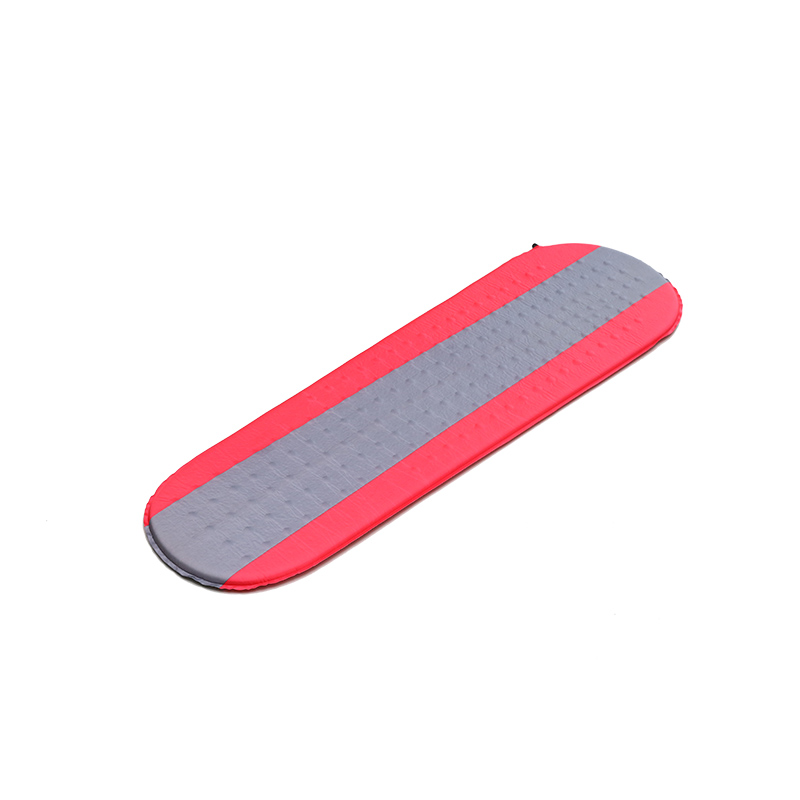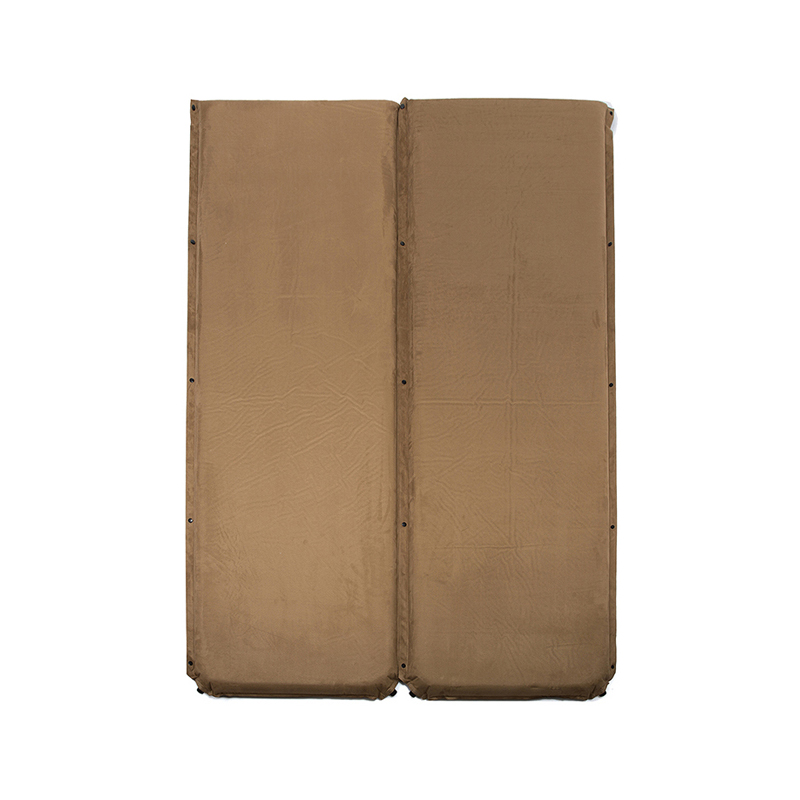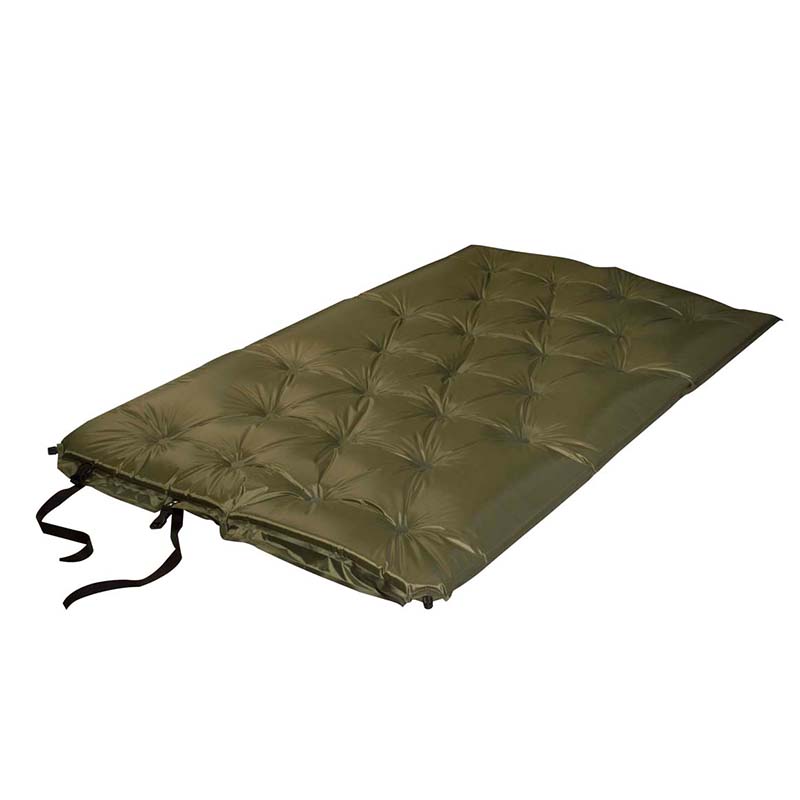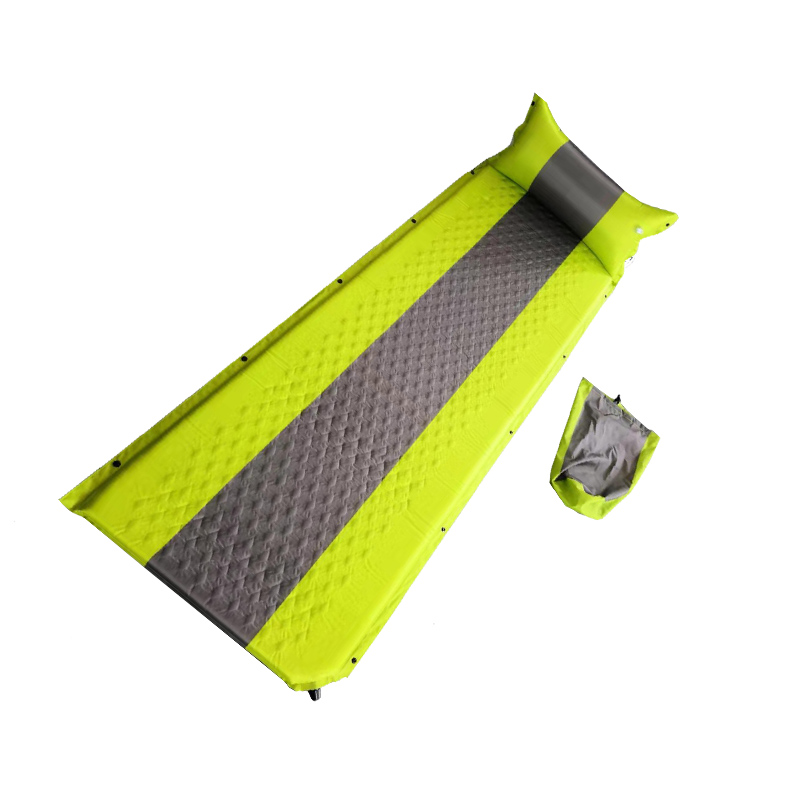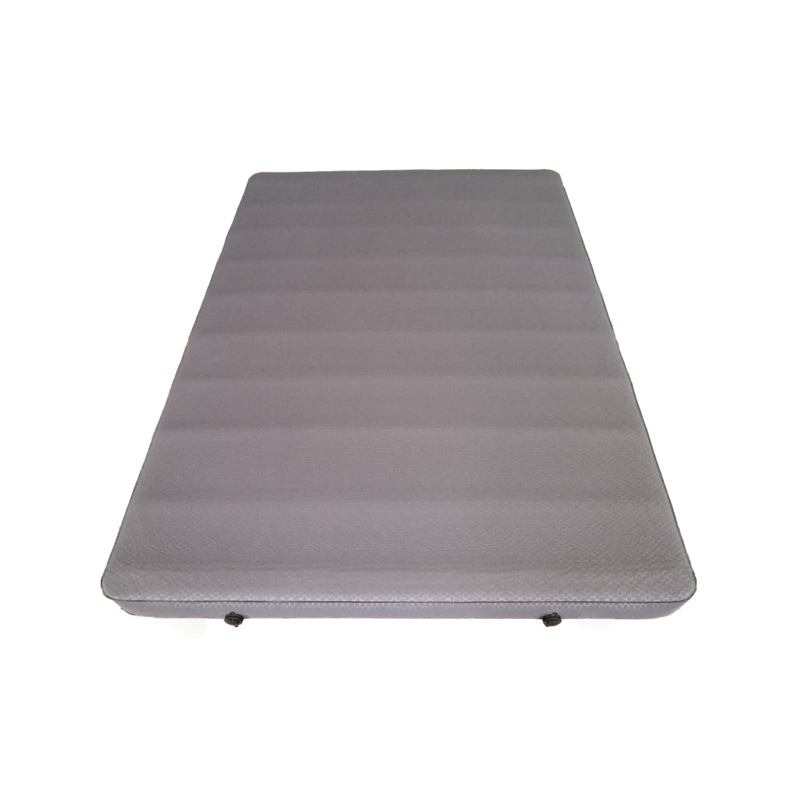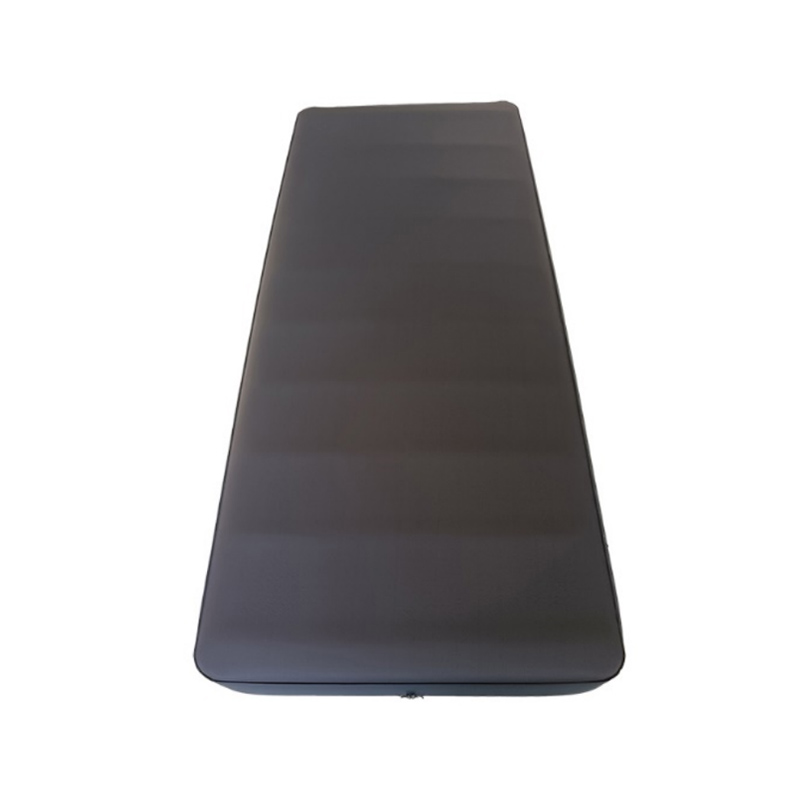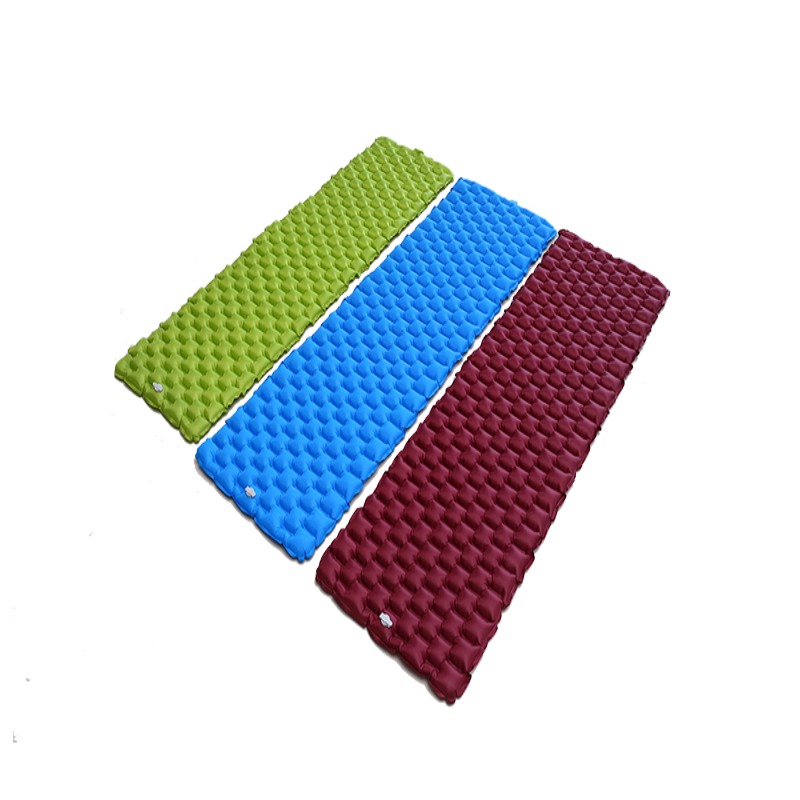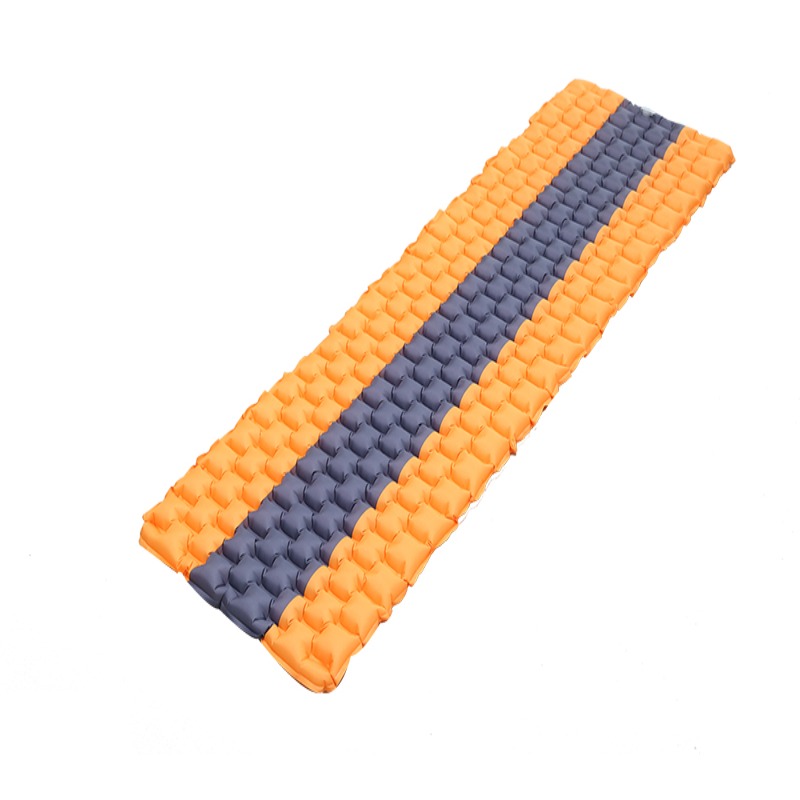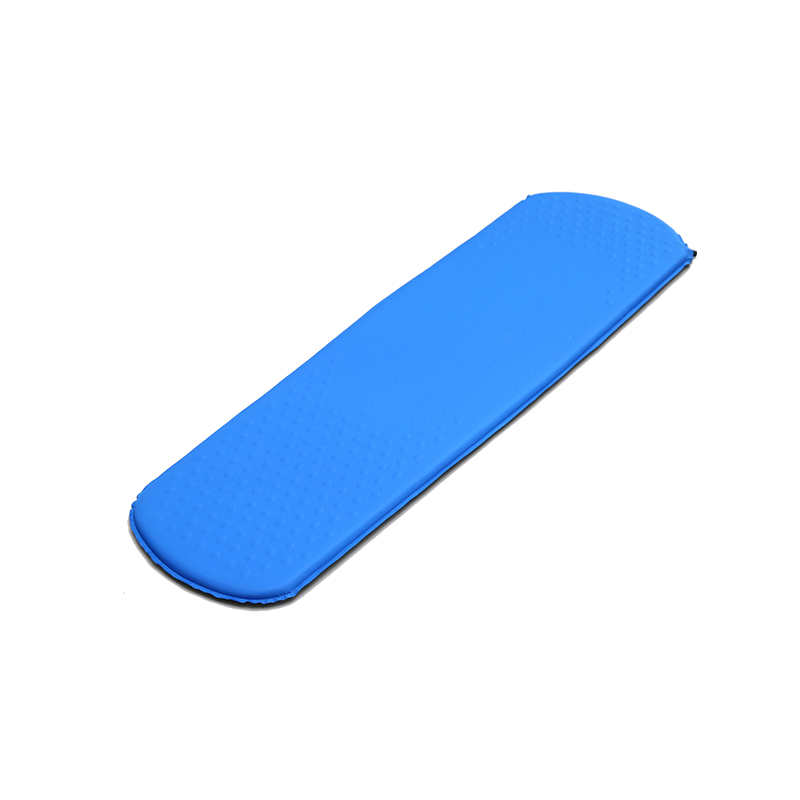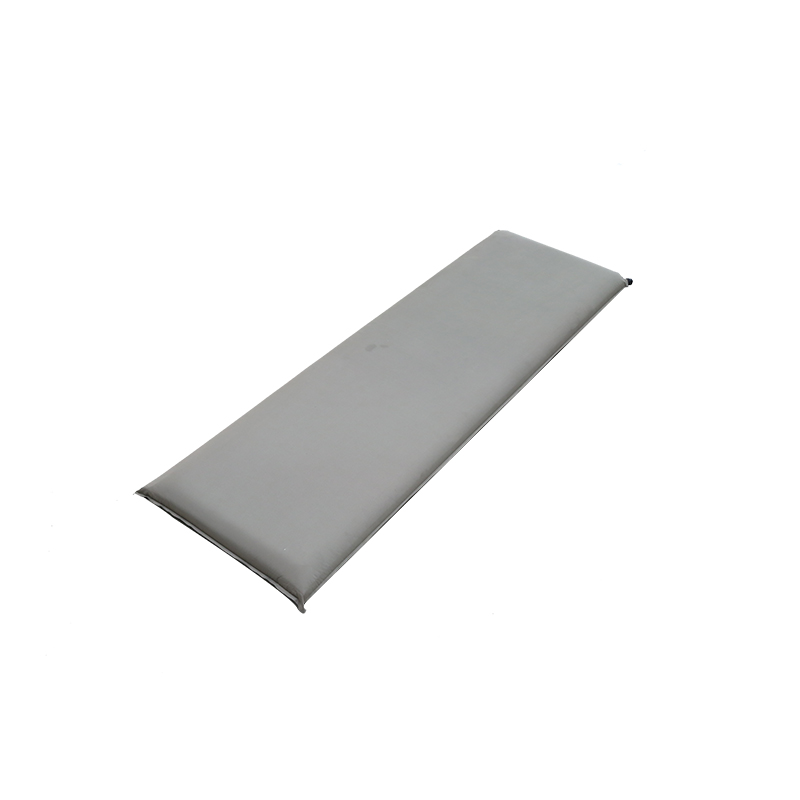Self-inflating mats are typically made of three layers of materials:
Top Layer: The top layer is usually made of a soft and comfortable material, such as polyester, nylon, or microfiber. This layer is designed to provide a comfortable sleeping surface for the user.
Insulation Layer: The insulation layer is made of open-cell foam or synthetic fibers. This layer is responsible for trapping the air that the mat will use to inflate itself. The open-cell foam or synthetic fibers create small pockets of air that will expand when the mat is opened and the air valve is released.
Bottom Layer: The bottom layer is made of a durable and waterproof material, such as vinyl or TPU (Thermoplastic Polyurethane). This layer is designed to protect the mat from moisture and abrasions from the ground.
Together, these three layers work together to create a comfortable and convenient sleeping surface that can be easily inflated and deflated. The open-cell foam or synthetic fibers allow the mat to self-inflate when the valve is opened, and the user can adjust the firmness of the mat by manually adding or releasing air from the valve. When it's time to pack up, the mat can be quickly deflated and rolled up for easy transport and storage.
The following are the steps to use a self-inflating mat:
Find a flat surface: Look for a flat and dry surface to place your self-inflating mat. Make sure there are no sharp objects that can puncture the mat.
Open the valve: Locate the inflation valve on the mat, which is usually located on one of the corners. Open the valve by turning the cap counter-clockwise. This will allow air to enter the mat.
Wait for the mat to inflate: Once the valve is open, the mat will start to inflate on its own. It may take a few minutes for the mat to fully inflate. You can help the process along by gently blowing into the valve or pressing on the mat to encourage the air to flow in.
Close the valve: Once the mat is fully inflated, close the valve by turning the cap clockwise. This will trap the air inside and prevent it from escaping.
Adjust the firmness: If the mat is too firm or too soft, you can adjust the firmness by opening the valve slightly and adding or releasing air as needed.
Use the mat: Once the mat is fully inflated and adjusted to your liking, you can use it for sleeping or other activities.
Deflate the mat: When you're ready to pack up, open the valve and roll the mat tightly to push the air out. This will make it easier to pack and store the mat.
By following these steps, you can use a self-inflating mat to provide a comfortable and convenient sleeping surface while camping or traveling.

 简体中文
简体中文 English
English 日本語
日本語 Español
Español Deutsch
Deutsch